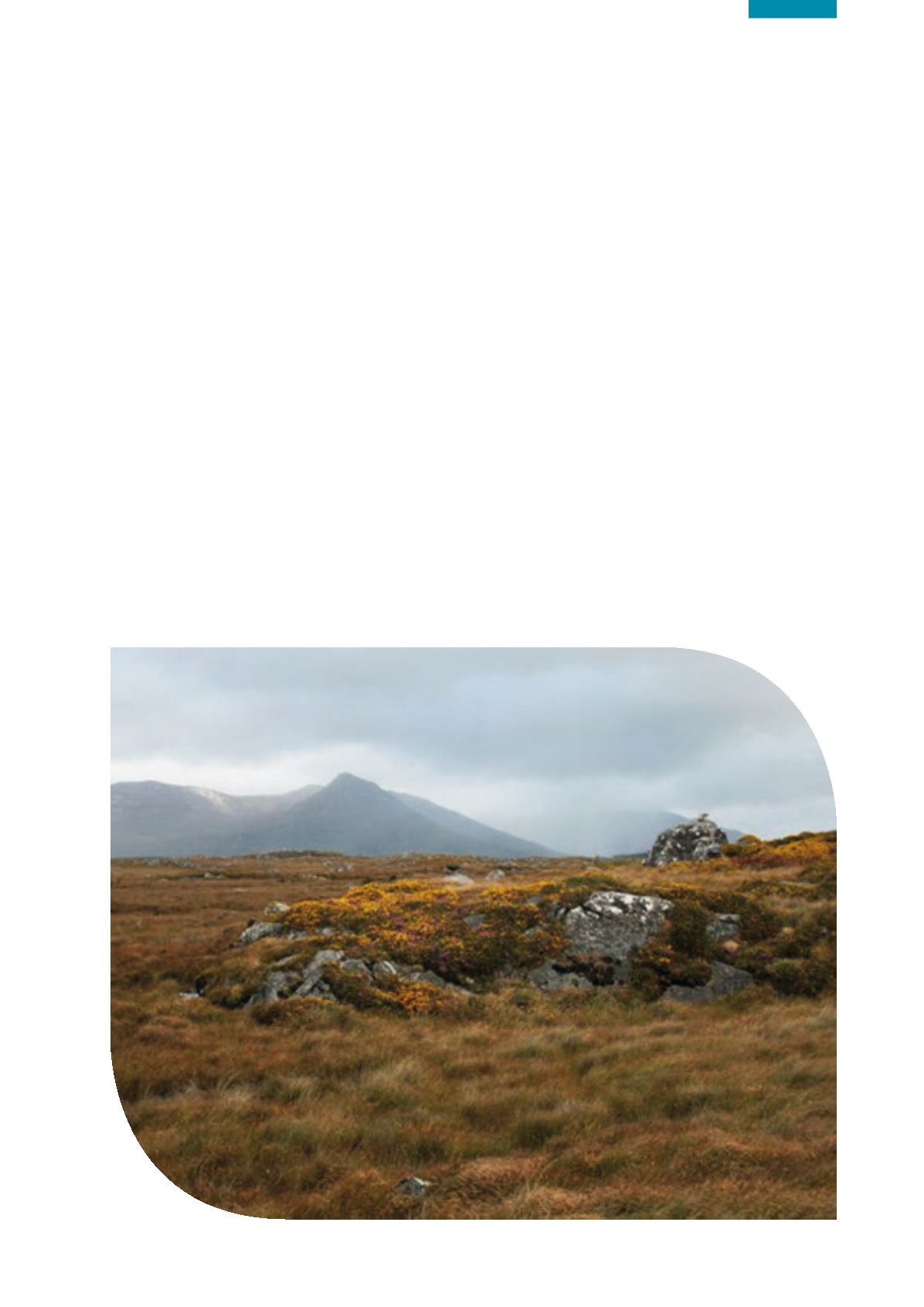

107
Chapter 7: Land and Soil
Land and Soil
Introduction
Soil is a biologically active, complex mixture of weathered
minerals, organic matter, organisms, air and water. This
mixture supports a range of critical functions such as
supporting terrestrial ecosystems and biological diversity,
agricultural food production, flood alleviation, water
filtration and storage, and carbon capture. Soils form
over long time periods and should be considered as finite
resources to be protected and managed carefully.
The environmental roles and functions provided by
different soils are increasingly being recognised. Soil
type and overlying surface conditions within water
catchments play a key role in determining the risk of
water pollution, through preventing nutrient runoff
and the treatment of septic tank effluent. There is now
a greater awareness of the need to protect soils and
manage their use in a sustainable manner and of the
wider benefits that can accrue.
Ireland’s soils, land use and landscape have been shaped
by natural processes and human interventions throughout
our history, leaving us with a rich mix of geological
features, soil types and land cover. This section examines
the key land cover types, sectoral activities, challenges and
pressures that shape Ireland’s landscape and the state of
our environment, as well as highlighting some key research
activities providing better mapping of land and soil and
understanding of the critical interactions between soil,
land use and environmental protection.
According to a recent EEA report, land take for urban,
infrastructure and industrial purposes exceeds 1000km
2
per year in the EU, with half of this surface being defined
as “sealed”, i.e. the connection between the atmosphere
and the soil surface is interrupted. This sealing effect can
impact on natural exchanges occurring between soils and
the atmosphere which influence the natural function and
associated biodiversity of soils (EEA, 2016).


















